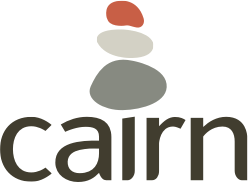This is a continuation of yesterday’s post on 4 of the 8 paradigm shifts in school health education. 8 paradigm shifts in total. Just as social studies used to be about learning facts and dates but has shifted to interpreting and analyzing, health education has shifted from knowledge to skills-based. Read on to learn more about what we know now.
5. Health Fairs; Know Your Objective
Many times when a school wants to work on the overall health and well-being of their school community they host a health fair. What are the objectives? What do you hope to gain? Health Fairs may be great for building partnerships (local organizations have an opportunity to showcase their resources), offer health screenings, share information, connect people. Health Fairs haven’t been shown to change behavior, attitudes or deliver skill practice. With that in mind, don’t NOT have one, but have a clear understand of the pros and cons of holding this event.
6. Prevention Should Begin 2 Years Before Initiation of a Behavior
I was told by an education trainer once that prevention in school should start 2 years before initiation of the behavior. I couldn’t find the cite, so I’m skeptical to say that as fact, however, it makes sense. We should not wait to teach students about contraception in their junior year in HS when we know nationally a little over 45% of our 12th graders are currently sexual active when in 9th grade the rate of currently sexually active teens is around 20%, according to CDCs Youth Risk Behavior Survey (YRBS). That is why we advocate for prevention to begin in middle school. More information means more students have access to make healthy decisions… now or even in their 20s, 30s and 40s. So, safe to say, look at the YRBS for your state or local area if your state has local data and plan on delivering prevention programs, not intervention programs for risk behaviors.
7. Use Data to Drive Curricular Decisions
Research demonstrates you need to practice skills many times to form habits. If you’ve read Malcolm Gladwell’s Outliers, you know that it might take about 10,000 hours to become a champion in that skill. We aren’t necessarily looking for champions in the 7 National Skill-Based Health Education Standards (although that would be nice!), but the idea is practice. Health teachers want to teach it all. All topics! Alcohol, tobacco and drug prevention, nutrition, physical activity, environmental health, violence and suicide prevention, sexual health, prevention and control of disease, mental, social and emotional health, and unintentional injury prevention. PHEW! With only 6 weeks to teach health education? Do NOT try and teach 4 days on each topic. It’s not effective. Instead, pick the top 3 topics based on risk behaviors among your students (anecdotal is ok too) and do two weeks each on three topics. Focus on the skills. Yes, I’m talking about the skills that keep coming up- advocacy, analyzing influences, interpersonal communication, goal-setting, self-management, decision making and accessing information. Because with more time to demonstrate the skill, we hope it becomes habit. As a math teacher drills us over and over on addition and subtraction so that when we learn higher level math problems, we have the basics… a health teacher needs to drill the skills so when a student is at a party on a Saturday night, they know how to refuse alcohol so easily, it comes to them like the answer for 2+2. And the refusal skill practice can happen throughout the 3 topics you select and will hopefully transfer to one of the other topics you didn’t have a chance to teach. It’s sad that we don’t have the time to do everything. But remember paradigm shift #2 on Functional Knowledge (yesterday’s post)? Less is more. What do students really need to know and be able to demonstrate to change behavior or maintain healthy ones? If you need support on using data to drive decisions, I have facilitated that process many times.
8. Use the Coordinated School Health (CSH) model!
It’s not a program. It’s a process we know works. And, health education is a piece of a larger puzzle. In my own words (not CDCs or I’ll bore you… sorry federal government!), CSH means:
- Key component of a CSH model is collaboration. Everyone comes together to work on sending consistent health messages throughout the school environment- staff, parents and students. This includes policies, programs, practices and curriculum. From the school nurse, to the health and PE teacher, to the school counselor and food service director.
- Starting or maintaining a School Health Advisory Council (SHAC). This helps ensures sustainability in case the champion leaves. It’s a time for everyone to meet (usually monthly) to work on the process.
- Complete a needs assessment tool. There are really 2 free strong tools out there now that ask about your current schools policies, practices and programs within topic areas. CDCs School Health Index (includes nutrition, physical activity, tobacco, unintentional injury, sexual health, asthma, violence). The Alliance for a Healthier Generation’s Healthy Schools Program Inventory is another tool focused only on nutrition and physical activity. These tools aren’t meant to be an evaluation tool, but rather an assessment of where you are and what your possibilities/opportunities may be!
- Develop an action plan based on data and your needs assessment results
- Implement your action plan and celebrate success. Repeat.
Questions on these paradigm shifts? Contact me! Have more to add? Contact me!
Jess@cairnguidance.com

Leave a Reply